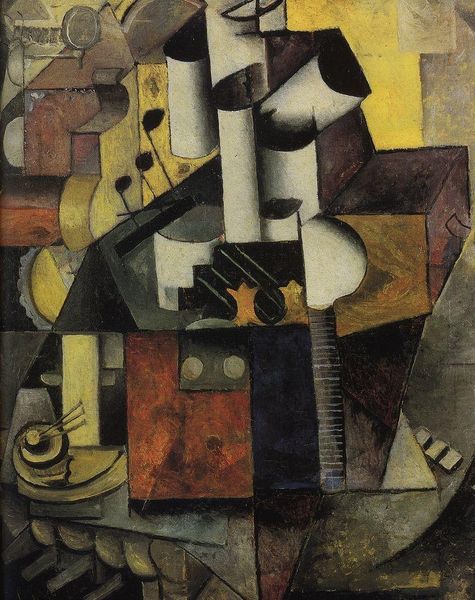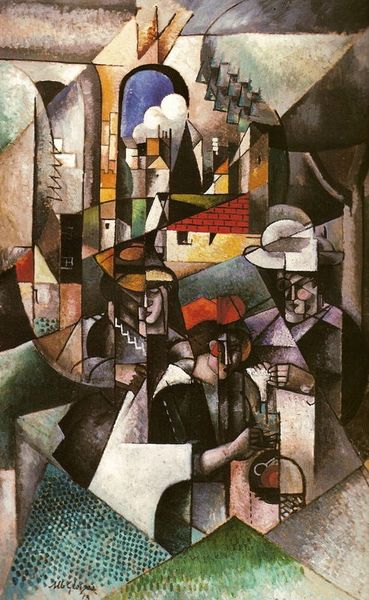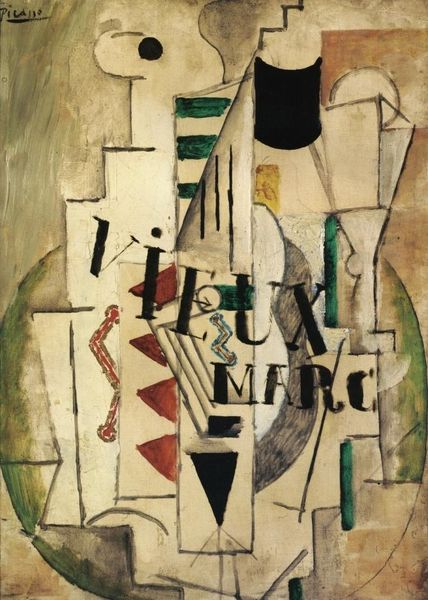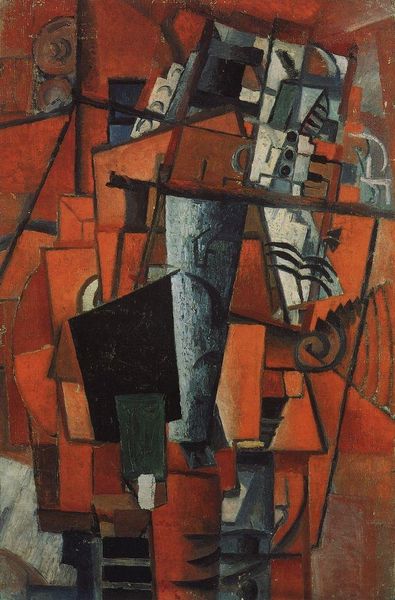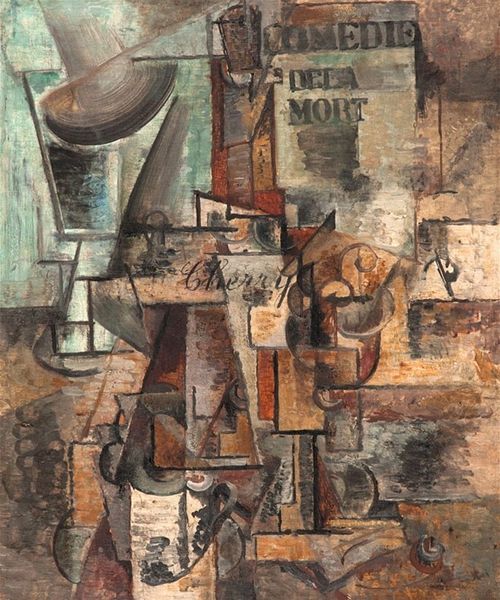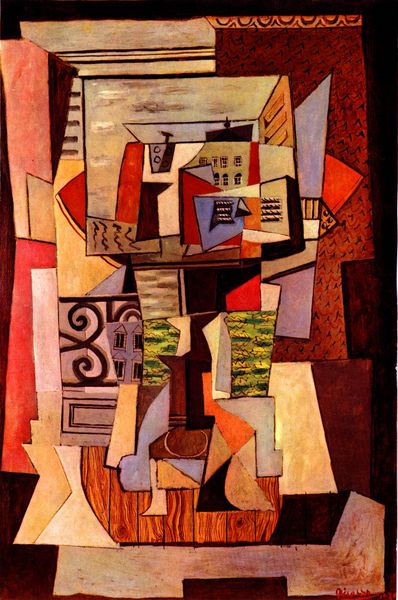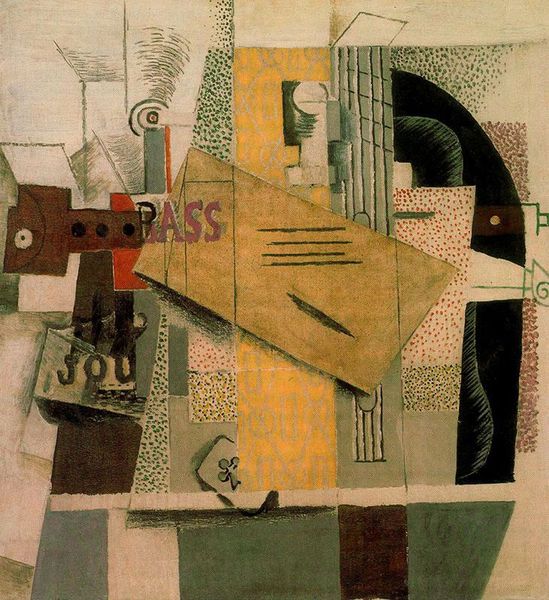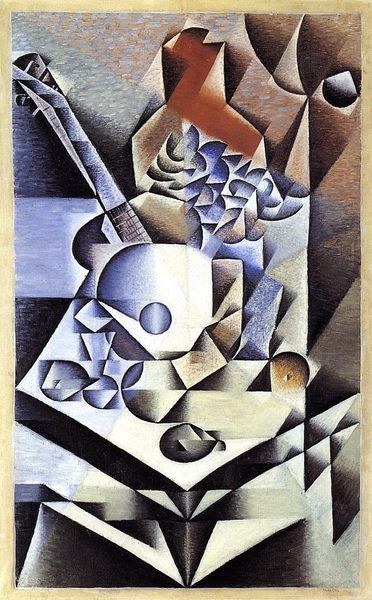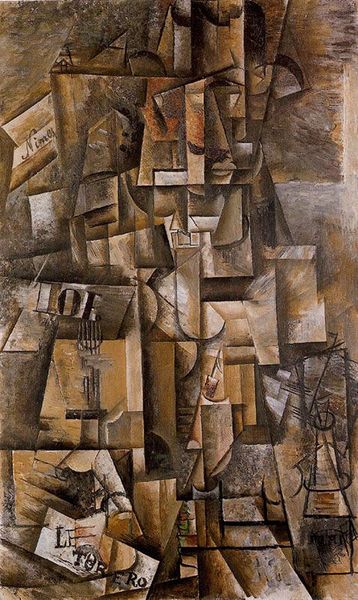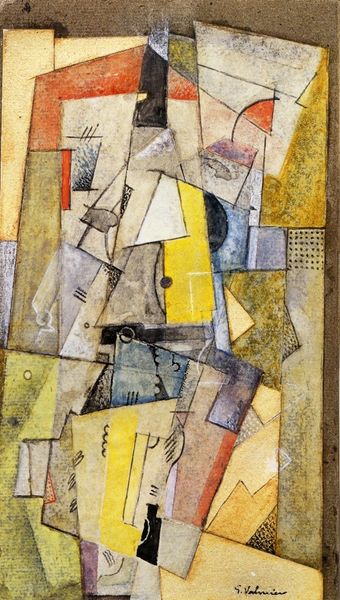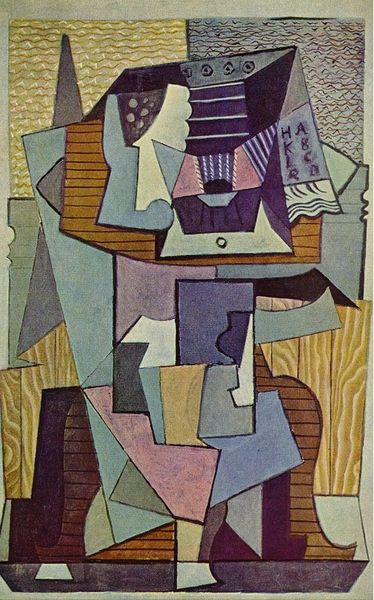
oil-paint
#
cubism
#
oil-paint
#
oil painting
#
geometric
#
modernism
Dimensions: 55 x 38 cm
Copyright: Public domain US
Editor: This is Picasso’s "Fruit Dish," an oil painting from 1912. At first glance, it feels like a jumble of shapes and letters, almost chaotic. But then your eye starts to pick out forms, and the geometry becomes compelling. What’s your take on it? Curator: Indeed. Immediately, one notices the fracturing of form characteristic of Cubism. Observe how Picasso deconstructs the traditional still life. He presents multiple viewpoints simultaneously, challenging the viewer's perception of space and object. Consider how the muted palette of browns, greys, and creams contributes to a flattened picture plane. Are you noting how this flattening denies depth, emphasizing the canvas as a two-dimensional surface? Editor: I see what you mean. It’s like he’s taken a fruit dish and smashed it into pieces, then reassembled it on the canvas. Curator: Precisely. It's not merely representation but rather a construction. We should note the inclusion of text fragments—"Cave" and "le." Semiotically, this interjection suggests the painting’s presence in the historical context. However, more critical for our purposes, do these textural elements further abstract the representational elements of a standard "still life?" Editor: Absolutely! It’s not just about the objects; it’s about how they are put together. It makes you work to see them. Curator: Precisely. It requires us to actively construct meaning rather than passively receive an image. Editor: This makes me think differently about the power of abstract art! Thank you for illuminating Picasso's methods for me. Curator: It’s been enlightening exploring the visual composition alongside you.
Comments
No comments
Be the first to comment and join the conversation on the ultimate creative platform.
